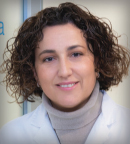Breast milk from women with breast cancer who were diagnosed during pregnancy or postpartum contains circulating tumor DNA (ctDNA), according to researchers at the Vall d’Hebron Institute of Oncology (VHIO) in Barcelona. The investigators noted that ctDNA can be detected through liquid biopsy in breast milk and may prove to be a new tool for early diagnosis of breast cancer in the postpartum period. The study was led by Cristina Saura, MD, and Ana Vivancos, MD, both of VHIO, and the first results were reported in Cancer Discovery.1

“The results published to date are encouraging and offer a potential new tool for the early diagnosis of breast cancer in a particularly sensitive population of young women and mothers.”— Cristina Saura, MD
Tweet this quote
“Before this technique can be put into practice, these results need to be confirmed in a larger number of patients, but the results published to date are encouraging and offer a potential new tool for the early diagnosis of breast cancer in a particularly sensitive population of young women and mothers,” Dr. Saura said in a press release.
The Vall d’Hebron University Hospital Breast Unit has a specific multidisciplinary unit to treat women diagnosed with breast cancer during pregnancy or during the postpartum period. “During all the years this unit has been operating,” said Dr. Saura, “we have observed that breast cancer patients who are diagnosed during pregnancy or, especially, during the postpartum period, have a worse prognosis because they are diagnosed at more advanced stages of the disease.”
Study Findings
The researchers collected breast milk and blood samples from 15 patients with breast cancer diagnosed during pregnancy or postpartum as well as from healthy women who were breastfeeding. “We analyzed the breast milk and blood samples using two techniques, next-generation sequencing and droplet digital PCR [polymerase chain reaction],” explained Dr. Vivancos in a press release. “And we found there was free circulating DNA of tumor origin in the breast milk. We were able to detect mutations present in the tumors of patients with breast cancer in the samples of breast milk of 13 of the 15 patients analyzed. Whereas in the blood samples collected at the same time, ctDNA was only detected in one of them.”

Ana Vivancos, MD
“For the first time, we showed that breast milk obtained from patients with breast cancer carries ctDNA, surpassing plasma-based liquid biopsy for detection and molecular profiling of early-stage breast cancer, even prior to diagnosis by image,” the investigators noted.
Breast Milk and Liquid Biopsy
Liquid plasma biopsy is currently used in patients with metastatic breast cancer for the detection or monitoring of certain mutations, but it still has low sensitivity as a tool for early diagnosis or predicting relapse, as it requires a very high amount of ctDNA in the blood to be detected.
The physiologic changes that occur in the breast during and after pregnancy make tumors more difficult to detect. “We have also observed that biologically, postpartum tumors are more aggressive,” Dr. Saura added, “and women become pregnant at ages when population screening with mammography is not yet carried out. In Spain, for example, these checkups do not start until they reach the age of 50.”
In recent years, liquid biopsy has been developed to screen urine for bladder cancer or saliva for head and neck cancer. “So, we thought that, because of its proximity to the tumor, breast milk could be an alternative source for detecting the tumor by liquid biopsy,” said Dr. Vivancos.
Next-Generation Sequencing–Based Genomic Panel
“Our next step in making this discovery [of ctDNA in breast milk] practically useful was to design a next-generation sequencing–based genomic panel as a possible method of early diagnosis in breast cancer,” Dr. Vivancos added. “Based on publicly available data, the researchers designed the VHIO-YWBC gene panel to detect the most frequent mutations present in women with breast cancer diagnosed before the age of 45. The panel has “a sensitivity of more than 70%, with a specificity of 100%.”
“This panel could be used in the future as a method for the early diagnosis of breast cancer in the postpartum period,” said Dr. Saura. “In the same way that a heel prick is performed on all newborns, collecting a breast milk sample from all women after birth for breast cancer screening could also be considered.”
What Next?
The next step in confirming the usefulness of using breast milk as a new liquid biopsy tool for the early detection of breast cancer in the postpartum period is to perform this noninvasive test on thousands of women. Based on the results published recently, the investigators are initiating a study to collect breast milk samples from 5,000 healthy women worldwide who became pregnant at age 40 or older or at any age who carry mutations that increase their risk of breast cancer (BRCA1, BRCA2, PALB2, RAD51C/D).
“Our results open the door to the future use of breast milk as a new source of liquid biopsy for the early detection of breast cancer in the postpartum period using a noninvasive technique,” said Dr. Saura.
DISCLOSURE: This research work is supported by the CERCA Programme of the Generalitat de Catalunya and the Severo Ochoa Programme funded by the Agencia Estatal de Investigación. For full disclosures of the study authors, visit aacrjournals.org.
REFERENCE

